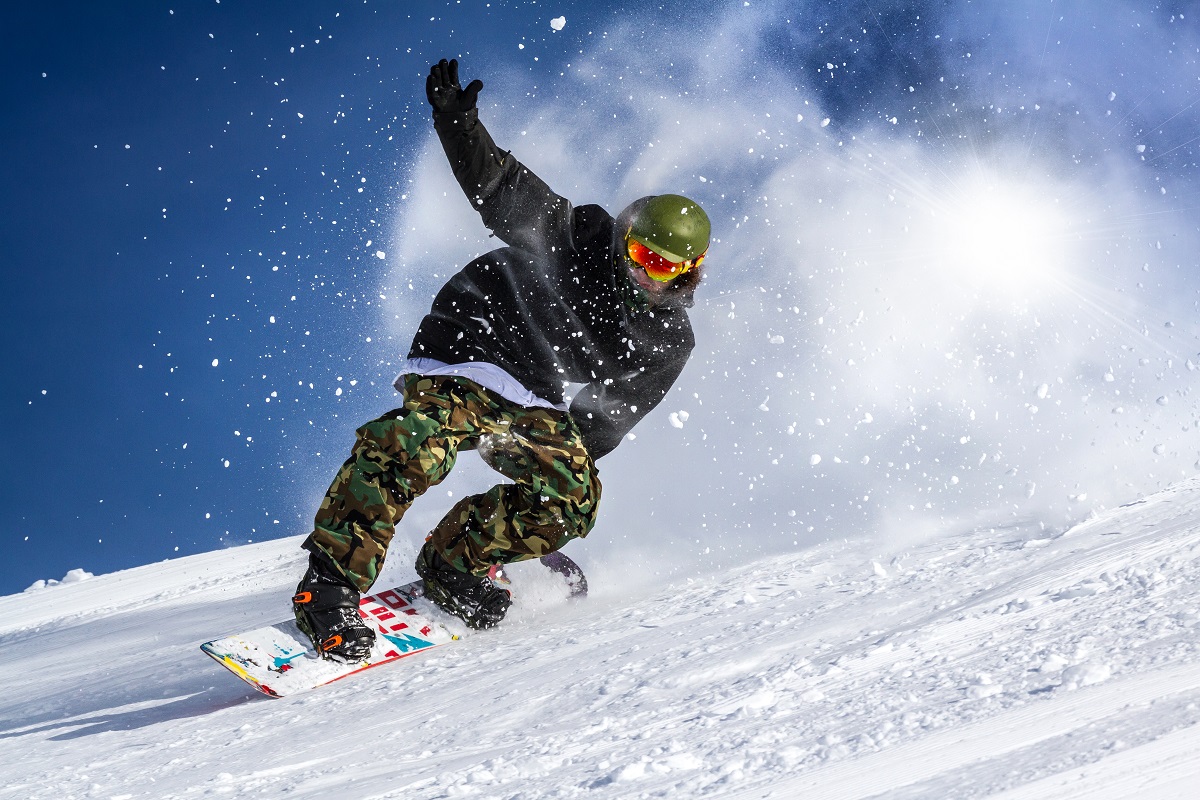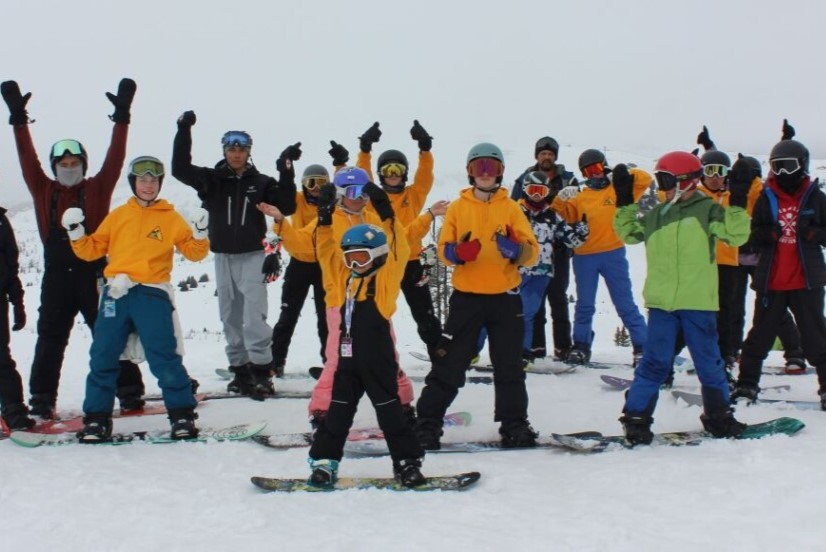
In the snow-covered landscapes of Canada, where winter sports reign supreme, a quiet change is trying to take root; one that seeks to empower Indigenous youth through the world of snowboarding. Spearheaded by Canada Snowboard’s Indigenous Program, this initiative aims not only to introduce more Indigenous athletes to the sport but also foster a sense of community, cultural pride, and opportunity for growth.
“My goal is to have more Indigenous athletes, more Indigenous representation, especially within Canada because at Canada Snowboard we strive to be the world’s leading snowboard nation,” says Canada Snowboard Sport Program Coordinator Quinn Thomas, a driving force behind the program’s revitalization efforts.
The Indigenous program’s journey began in 2015 with the establishment of the First Nation Snowboard Team, which later evolved into the Indigenous Life Sport Academy (ILSA). Since then, the program has undergone a revamp, driven by a passionate commitment to increase Indigenous representation within the snowboarding community. As Canada Snowboard strives to be a global leader in snowboarding, it recognizes that achieving this goal requires embracing and celebrating the diversity of Indigenous cultures.
At the heart of the Indigenous Program’s mission is the belief in Indigenous leadership guiding Indigenous youth.

“We want to have Indigenous leaders leading Indigenous youth. We want to honour and preserve their way of doing things. That coupled with information from Canada Snowboard on how to deliver content, how to build athletes, how to get more people snowboarding,” says Thomas. “Essentially developing Indigenous coaches so that they can also develop Indigenous athletes.”
Thomas, who is Métis on his paternal side, believes this collaborative approach emphasizes mutual respect and partnership, allowing Indigenous communities to shape the program according to their unique needs and values.
The program’s structure mirrors Canada Snowboard’s general coaching program, with a focus on building community coaching. Thomas developed a community coach program that’s currently in the trial stages through the Coaching Association of Canada’s (CAC) locker, and its aim is to show that snowboarding “isn’t just for competition, it’s recreational too.” Its goal is to make it easier for people in rural communities to have access to resources and coaching knowledge, and to continue to develop without having to travel.
The community coach program is part of Thomas’ 5-year roadmap. The ultimate goal? From community coach workshops to Canadian Association of Snowboard Instructors (CASI) instructor courses, the program aims to equip Indigenous coaches with the skills and knowledge to instruct and mentor youth in their communities.
By starting with instruction and community coaching, the program aims to create a solid foundation for aspiring athletes to explore the sport at their own pace, whether for recreation or competition. Essentially breaking down barriers and fostering inclusivity in winter sports.
Collaboration with organizations such as the Indigenous Sport Council of Alberta has been instrumental in furthering these initiatives. By forging partnerships with entities like the Edmonton Ski Club, efforts have been made to increase access to snowboarding, allowing more families to experience the joy of the sport. While still in its early stages, the partnership with the Indigenous Sport Council of Alberta shows a promising beginning.
However, the journey is not without its challenges. Thomas says accessibility remains a significant barrier, particularly in regions where access to snowboarding facilities is limited or cost prohibitive.
“Like anything past the lesson stage of things, it gets more difficult to go to a ski hill,” notes Thomas. “And I think the industry really pushes people towards the resorts, but all you really need to go snowboard is a hill and the will to walk up and down and do a couple of turns.”

To address this, Thomas is exploring innovative solutions such as the creation of hike parks in urban centers and gear libraries to provide affordable access to equipment. Thomas is also looking at building strong partnerships with provincial and territorial Aboriginal sport bodies and snowboard associations as another key strategy for expanding the program’s reach. By collaborating with existing organizations and community leaders, the program can leverage local expertise and resources to support Indigenous participation in snowboarding.
“We want to keep letting them know that the sport is here, and we want you to come and snowboard,” Thomas says. “And with this coaching program, we want to give the communities the tools to run it on their own.”
Also instrumental in bringing snowboarding to Indigenous communities is the only Indigenous male athlete on Canada’s national snowboard team, Liam Gill.
“He [Liam] does a lot for the community, but he does it on his own,” notes Thomas. “He and his family are amazing.”
Gill, a 20-year-old halfpipe athlete, is a member of the Dene First nation Liidlii Kue in the Northwest Territories. After competing in the 2022 Olympic Games in Beijing, he drew the attention and support of Indigenous communities across the nation.
Following the 2022 Games, Gill has been ‘paying it forward’ by helping Indigenous youth try snowboarding. First on his own in the N.W.T, then near Banff at the Sunshine Ski Resort. In May 2023 with the help of a legacy grant from the Canadian Olympic Committee, Gill was able to bring kids to a private ‘Liam and Friends’ event. Along with having fun, Gill’s goal was to help make snowboarding accessible to Indigenous youth, regardless of financial barriers.
“By travelling to the Northwest Territories, Liam brought snowboarding up there and he’s shown the community some of the things we’ve been talking about,” Thomas explains. “Like how you can find a hill and do a few turns… they showed you could use a snowmobile with a bucket on the back to tow people up the hill, or hike or walk up and then you can just slide around. That’s the magic of snowboarding.”
Thomas knows firsthand the impact of seeing someone with a similar background achieving success. Reflecting on a time when he was at an event called the Gathering and was approached by a young athlete after giving the land acknowledgement.
“They thought it was awesome to see someone like me, who is also like them, leading something. It was probably one of the most inspiring things for me and it’s what also helps me to drive this program and keeping figuring it out how we make it even better.”
Not an easy feat but Canada Snowboard is solid on their commitment. And as this roadmap unfolds over the next 5 years, its impact is poised to extend far beyond the slopes, leaving an indelible mark of empowerment and accessibility within Indigenous communities across Canada.
About the Author(s)
Paula Baker, M.Sc., is the managing editor at The Sport Information Resource Centre (SIRC). In this role, she draws on her 20 years of experience as a journalist, and as a former exercise physiologist, to bring sport research, knowledge, and the occasional human-interest story, to our readers.
Photo credits:
Main photo: Liam Gill @trill_grill_ on Instagram
First photo: Alexa Pepper and Canadian Olympic Committee
Second photo: Emily Sullivan via Liam Gill Instagram
References
The information presented in SIRC blogs and SIRCuit articles is accurate and reliable as of the date of publication. Developments that occur after the date of publication may impact the current accuracy of the information presented in a previously published blog or article.
